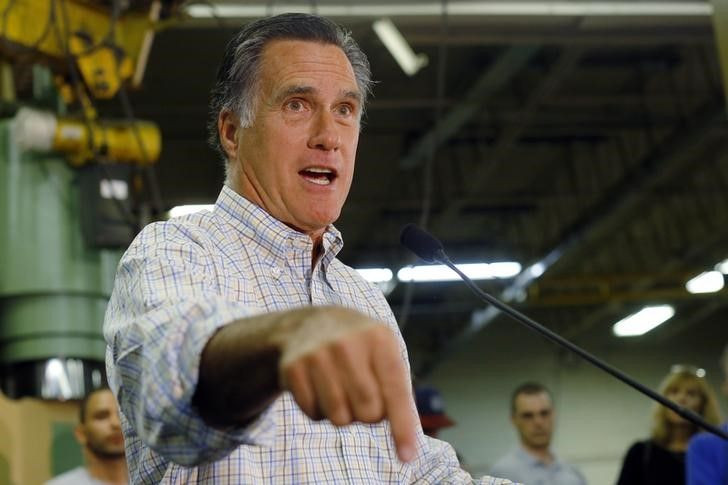Romney’s Tweets Were Approved By 22 People During The 2012 Presidential Election: Report

Mitt Romney’s presidential campaign did not take his Twitter account lightly. A paper on the 2012 presidential election says 22 people oversaw the messages sent on his social media accounts, Business Insider reported.
Caitlin Checkett, the Romney campaign’s digital integration director, said tweets, Facebook posts, blogs and photos were sent to nearly two dozen individual staffers before they were published.
“The downfall of that of course is as fast as we are moving it can take a little bit of time to get that approval to happen,” she said in the report.
The paper published by Daniel Kreiss, an assistant professor at the University of North Carolina’s School of Journalism and Mass Communication, describes how presidential campaigns used Twitter in the 2012 electoral cycle. Kreiss found Obama campaign staffers had more autonomy when it came to social media posts.
Obama campaign manager Jim Messina “believed that you’ve got to go let the digital guys do what the digital guys want to do and not have the digital guys servicing a communications team,” said Teddy Goff, the digital director for Obama’s presidential campaign.
During the 2012 Republican National Convention, Obama’s digital staffers responded to comments and tweets in real time as the event unfolded. While the staffers did not have the same oversight as their opposites in Romney’s campaign, Goff said they were aware of the campaign’s communication’s strategy. For instance, they could not make policy announcements but they could respond to events using “the broad context of the campaign’s messaging.”
Twitter played a pivotal role in the 2012 presidential election. Twitter statistics show how both sides embraced the microblogging platform. During Obama's 2012 State of the Union address 800,000 tweets were sent, Twitter said. Tweets with Rick Santorum’s name jumped from 10- to 20 per minute to more than 2,500 after he dropped out of the Republican presidential nomination race.
At the time, a study by the Pew Research Center found about 15 percent of American adults joined the site -- meaning that few voters actually used Twitter. Still, it became a tool for “influencers” to share campaign messages elsewhere.
"The subset of people on Twitter may be relatively small, but it's a politically engaged audience whose influence extends both online and off," Heather LaMarre, a University of Minnesota communications professor, told the Associated Press in 2012. "It's not the direct message that has the biggest influence on people -- it's the indirect message."
The Hill reported the Republican Party’s “autopsy” of the 2012 campaign concluded progress has to be made in its digital strategy to compete with the Democratic Party in the future.
“Democrats had the clear edge on new media and ground game, in terms of both reach and effectiveness,” the study said. “We need to define our mission by setting specific political goals and then allowing data, digital, and tech talent to unleash the tools of technology and work toward achieving those goals.”
© Copyright IBTimes 2024. All rights reserved.






















